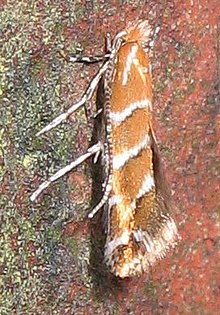The Silver lining on the tomato leaves is neither a disease nor a mottle caused by lack of nutrition or over watering as was first suspected by us...after research i discovered that it is a leaf miner an insect that lives within the membrane of the leaf and eats the tissue leaving the marks that appear as a silver lining on the leaves.

A leaf miner is the larva of an insect that lives in and eats the leaf tissue of plants. The vast majority of leaf-mining insects are moths (Lepidoptera), sawflies (Symphyta) and flies (Diptera), though beetles and wasps also exhibit this behavior.
Like Woodboring beetles, leaf miners are protected from many predators and plant defenses by feeding within the tissues of the leaves themselves, selectively eating only the layers that have the least amount of cellulose. When attacking Quercus robur (English oak), they also selectively feed on tissues containing lower levels of tannin, a deterrent chemical produced in great abundance by the tree.[1]
The precise pattern formed by the feeding tunnel is very often diagnostic for which kind of insect is responsible, sometimes even to genus level. The mine often contains frass, or droppings, and the pattern of frass deposition, mine shape and host plant identity are useful to determine the species of leaf miner. A few mining insects utilise other parts of a plant, such as the surface of a fruit.
Some patterns of leaf variegation are part of a defense strategy employed by plants to deceive adult leaf miners into thinking that the leaf has already been preyed-upon.[2]
Leaf miners are regarded as pests by many farmers and gardeners as they can cause damage to agricultural crops and garden plants, and can be difficult to control with insecticide sprays as they are protected inside the plant's leaves. Spraying the infected trees/plants with Spinosad,
an organic insecticide, will control the leaf miner. Spinosad does not
kill on contact but must be ingested by the leaf miner. Two or three
applications may be needed in a season, being careful not to spray when
bees are around.
Leaf miner infection can be reduced or prevented by planting trap crops near the plants to be protected. For example, lambsquarter, columbine, and velvetleaf will distract leaf miners, drawing them to those plants and therefore reducing the incidence of attack on nearby crops. This is a method of companion planting.
Leaf miner
From Wikipedia, the free encyclopedia

Leaf Miner trail on a fallen leaf in a Gondwana
cool temperate rainforest. Note the initial thin width of the insect
trail, becoming wider as the insect grows while it navigates around the
leaf. Cryptocarya foveolata from Cobark Park, Barrington Tops, Australia
Like Woodboring beetles, leaf miners are protected from many predators and plant defenses by feeding within the tissues of the leaves themselves, selectively eating only the layers that have the least amount of cellulose. When attacking Quercus robur (English oak), they also selectively feed on tissues containing lower levels of tannin, a deterrent chemical produced in great abundance by the tree.[1]
The precise pattern formed by the feeding tunnel is very often diagnostic for which kind of insect is responsible, sometimes even to genus level. The mine often contains frass, or droppings, and the pattern of frass deposition, mine shape and host plant identity are useful to determine the species of leaf miner. A few mining insects utilise other parts of a plant, such as the surface of a fruit.
Some patterns of leaf variegation are part of a defense strategy employed by plants to deceive adult leaf miners into thinking that the leaf has already been preyed-upon.[2]
Contents |
Relationship with humans
Leaf miner infection can be reduced or prevented by planting trap crops near the plants to be protected. For example, lambsquarter, columbine, and velvetleaf will distract leaf miners, drawing them to those plants and therefore reducing the incidence of attack on nearby crops. This is a method of companion planting.
See also
- Agromyzidae (Leaf miner flies)
- Pegomya hyoscyami (Spinach / beet leaf miner)
- Douglasiidae (including Tinagma, the largest genus of Douglasiidae)
- Gracillariidae
- Nepticulidae
- Horse-chestnut leaf miner (Cameraria ohridella)
- Tenthredinidae (some species)
- Tischerioidea (Trumpet leaf-miner moths)
- Folivore









thank for information.
ReplyDeletethank for information.
ReplyDelete